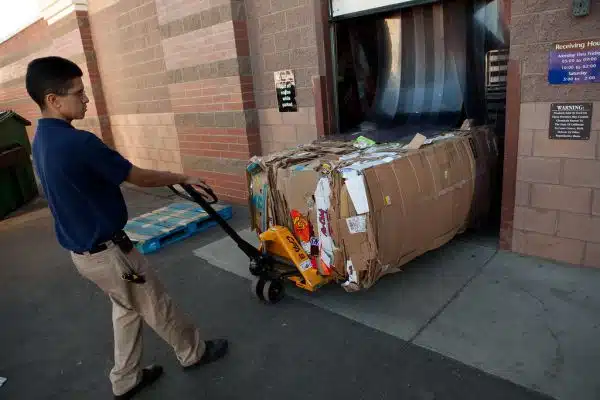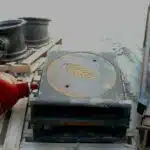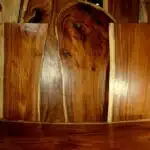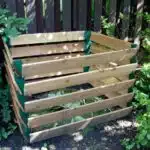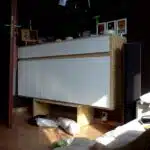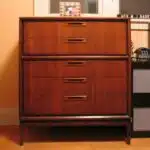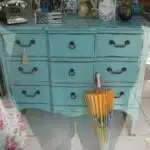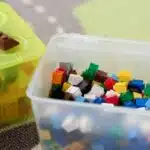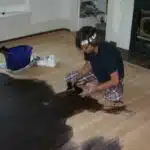Cardboard is one of the most commonly used materials in packaging and shipping. It’s durable, lightweight, and easy to transport. However, once it has served its purpose, cardboard often ends up in landfills where it can take years to decompose. As individuals and communities become more conscious of their impact on the environment, recycling cardboard has become an increasingly important practice. In this article, we will explore how to recycle cardboard properly and efficiently.
Recycling cardboard not only reduces waste but also conserves natural resources and saves energy. The process involves breaking down used cardboard into pulp fibers that can be used to make new paper products such as tissue paper, cereal boxes, or even building materials. Recycling just one ton of cardboard can save up to 17 trees and reduce greenhouse gas emissions by over 70%. By making a conscious effort to recycle cardboard, we can help preserve our planet for future generations while contributing towards a more sustainable economy.
Benefits Of Recycling Cardboard
The sight of a towering pile of cardboard waste can invoke feelings of overwhelming frustration. It’s not only an eyesore but also an environmental hazard. Fortunately, recycling cardboard is a simple solution with numerous benefits.
One significant benefit of recycling cardboard is reducing the environmental impact of cardboard waste. Cardboard takes up valuable space in landfills and contributes to greenhouse gas emissions. Recycling reduces the need for new materials, conserves natural resources, and decreases energy consumption. Additionally, recycling cardboard creates jobs and boosts local economies.
Another advantage of recycling cardboard is its positive effect on wildlife. Landfills filled with cardboard waste can attract scavengers like rats and birds, which can lead to health hazards and contamination. Recycling prevents these animals from being drawn to landfills, helping protect both them and humans.
Recycling your old boxes may seem like a small effort, but it has significant impacts on our environment and communities. By taking the time to recycle your cardboard instead of throwing it away, you’re helping reduce waste, conserve resources, support local economies, protect wildlife, and decrease pollution levels.
Transitioning into the next section on sorting your cardboard for recycling: “Now that we understand the importance of recycling cardboard let’s explore how to sort it properly.”
Sorting Your Cardboard For Recycling
Now that you know the many benefits of recycling cardboard, it’s time to learn about sorting techniques and how to properly prepare your cardboard for recycling. By sorting your cardboard correctly, you can ensure that it is free from contaminants and can be easily recycled into new products.
The first step in sorting your cardboard is to remove any tape or labels. These materials cannot be recycled and will contaminate the batch. Once you have removed all of the tape and labels, flatten the boxes and stack them neatly in a designated recycling bin. Make sure that there are no other materials mixed in with the cardboard, such as plastic bags or food waste.
Sorting your cardboard properly has a significant environmental impact. By keeping contaminants out of the recycling stream, we can reduce the amount of waste sent to landfills and conserve natural resources. Additionally, recycled cardboard requires less energy to produce than new cardboard, which helps to reduce greenhouse gas emissions.
In order to continue making a positive impact on our environment through recycling, it’s important to remove contaminants from our cardboard before placing it in the recycling bin. In the next section, we will discuss how to identify and remove common contaminants from your cardboard so that it can be effectively recycled into new products.
Removing Contaminants From Cardboard
When recycling cardboard, it is important to first remove contaminants such as food residue or dirt. This can be achieved through the process of washing the cardboard, which should be undertaken before sorting the cardboard into different types. It is also important to consider the type of adhesive used on the cardboard, as some may not be water soluble and may require a different form of cleaning. Additionally, sorting the cardboard into different types based on their materials, such as corrugated or paperboard, is important as it will help ensure the recycling process is as efficient as possible.
Washing
Washing is an important step in removing contaminants from cardboard before it can be recycled. Using detergent and water, all dirt and debris can be washed away. This process not only ensures that the cardboard is clean, but also improves the sustainability of washing cardboard.
Using detergent when washing cardboard helps to break down any grease or oil that may have been absorbed by the material. This makes it easier to remove these contaminants completely, leaving the cardboard free from any impurities. Additionally, using detergent is more eco-friendly than using harsh chemicals that may harm the environment.
The sustainability of washing cardboard lies in its ability to extend the life of the material. By removing contaminants and cleaning it properly, it can be recycled into new products instead of being sent to a landfill or incinerator. This reduces waste and conserves resources, making recycling a more viable option for a cleaner future.
Sorting
Sorting is another important step in removing contaminants from cardboard before it can be recycled. Cardboard comes in different grades, each with its own level of contamination. Sorting the cardboard by grade ensures that it is properly processed for recycling. The most common cardboard grades are corrugated cardboard and paperboard, which are used for packaging and shipping products. Corrugated cardboard is thicker and sturdier, while paperboard is thinner and more flexible.
Recycling statistics show that sorting cardboard increases its recyclability. When sorted properly, up to 90% of the material can be recycled into new products. This reduces waste and conserves resources, making recycling a more sustainable option than sending it to a landfill or incinerator. Additionally, sorting helps to reduce contamination levels in the recycling stream, ensuring that only clean materials are used for producing new products.
Sorting also plays an important role in creating a circular economy for cardboard. By separating different grades of cardboard, it can be recycled into new products that meet specific needs. For example, corrugated cardboard can be used to make new boxes or packaging materials, while paperboard can be used for food packaging or other consumer goods. This creates a closed loop system where materials are continually reused instead of being discarded after one use. Overall, sorting increases the sustainability of washing cardboard by ensuring that it is properly processed for recycling and reducing waste in the environment.
Preparing Cardboard For Recycling
Like a puzzle waiting to be solved, breaking down cardboard for recycling can be a satisfying task. By flattening and folding cardboard boxes, you are reducing their volume – making them easier to transport and process at the recycling center. Picture yourself as a cardboard artist, molding the material into manageable shapes that will soon become part of a new product.
Before placing your flattened cardboard in the recycling bin, it is important to remove any adhesives or tape that may still cling to the material. These substances can damage recycling equipment and contaminate other recyclables. Use a utility knife or scissors to carefully cut away any adhesive residue, leaving only pure cardboard behind.
By properly preparing your cardboard for recycling, you are contributing to a sustainable future and helping to conserve natural resources. Keep in mind that different areas may have specific guidelines for cardboard preparation, so be sure to check with your local recycling center before disposing of any materials. In the next section, we will explore how you can find your nearest recycling center and ensure that your recyclables are being processed correctly.
Finding Your Local Recycling Center
Recycling is a simple way to help the environment and reduce waste. When it comes to recycling cardboard, it’s important to know where to go. Finding recycling options in your area is easy and can be done in a few simple steps.
First, check with your local government or waste management agency to see what green initiatives are available in your area. Many communities have curbside recycling programs that accept cardboard along with other recyclables. Some areas may also have drop-off centers or special events for recycling certain materials.
If you’re still unsure about where to go, try using online resources like Earth911.com or RecycleNation.com. These websites allow you to search for recycling centers by zip code or city and provide information on what materials are accepted at each location. Be sure to call ahead to confirm hours of operation and any restrictions on the types of cardboard accepted.
To make it even easier, here are five tips for finding your local recycling center:
- Check with your local government or waste management agency
- Look for curbside recycling programs
- Search online resources like Earth911.com or RecycleNation.com
- Call ahead to confirm hours of operation and restrictions on accepted materials
- Consider asking friends or neighbors for recommendations
By taking the time to find a nearby recycling center, you can do your part in reducing waste and helping the environment. In the next section, we’ll explore municipal recycling programs and how they work towards a more sustainable future.
Municipal Recycling Programs
According to a report by the Environmental Protection Agency (EPA), cardboard is one of the most commonly recycled materials in municipal recycling programs. In fact, in 2018 alone, over 96% of all corrugated boxes were recycled in the United States. This statistic highlights the success of recycling education and waste reduction initiatives implemented by municipalities across the country.
Recycling education is crucial in promoting cardboard recycling among households and businesses. Many cities have implemented curbside recycling programs that make it easy for residents to recycle cardboard along with other recyclable materials such as glass, plastic, and paper products. These programs are often accompanied by educational campaigns that provide information on how to properly sort and prepare cardboard for recycling.
In addition to curbside recycling programs, some municipalities have also established waste reduction initiatives that encourage businesses to reduce their use of cardboard. For example, some cities offer incentives for businesses that switch from traditional cardboard packaging to reusable containers or digital invoicing systems. These initiatives not only promote environmental sustainability but can also result in cost savings for businesses. Overall, municipal recycling programs play a critical role in promoting cardboard recycling and reducing waste in our communities.
Moving forward, individuals and businesses can take advantage of commercial cardboard recycling options to further reduce their environmental impact. These options include working with waste management companies that specialize in collecting and processing large quantities of cardboard waste. By utilizing these resources, we can continue to promote sustainable practices while simultaneously supporting local economies and reducing our carbon footprint.
Commercial Cardboard Recycling Options
Municipal Recycling Programs play a critical role in recycling cardboard waste. They offer cardboard collection facilities to the community, making it easy for individuals and households to recycle their used cardboard. Cardboard collected is then transported to local sorting facilities where it is baled and sent to commercial recycling centers.
Recycling partnerships between municipalities and local businesses have also been established to facilitate the recycling of large quantities of cardboard waste. These partnerships help divert large volumes of cardboard waste from landfills by providing businesses with specialized equipment for sorting, transporting, and processing large quantities of cardboard. The recycled material is then sold back into industries that use it as a raw material for producing new products.
Commercial Cardboard Recycling Options are also available for businesses that generate large volumes of cardboard waste. Businesses can opt for curbside pickup services or drop-off at nearby recycling centers. Curbside pickup services offer convenience as recyclers come directly to the business premises to collect the recyclable materials while drop-off centers provide an opportunity for businesses to save on costs associated with transportation.
Moving forward, curbside recycling options remain one of the most convenient ways individuals and households can recycle their used cardboard. Cities across the world have implemented curbside recycling programs that make it easy for residents to separate their recyclables from other waste and dispose of them correctly. In our next section, we will delve deeper into how curbside recycling options work and their benefits.
Curbside Recycling Options
Cardboard recycling is an important part of curbside recycling programs. Preparing cardboard for recycling involves flattening it, removing any non-cardboard elements, and separating it from other recyclable materials. Cardboard recycling offers numerous benefits such as reducing landfill waste, saving trees, and diverting materials from incinerators. Municipalities across the country offer curbside cardboard recycling programs, including single-stream and dual-stream recycling methods. Single-stream recycling involves all recyclables being placed into one bin for collection, while dual-stream recycling requires cardboard to be separated from other items. In addition, some cities offer drop-off centers for large quantity cardboard recycling.
Steps To Prepare Cardboard For Recycling
When it comes to recycling, cardboard is one of the most commonly recycled materials. The cardboard recycling market has significantly grown in recent years due to the increasing demand for sustainable cardboard products. However, before you can recycle your cardboard, it’s important to prepare it properly.
The first step in preparing cardboard for recycling is to remove any tape or labels from the surface. This helps prevent contamination during the recycling process and ensures that only clean material is recycled. Next, flatten the cardboard boxes to save space and make them easier to transport. If you have large pieces of cardboard, cut them into smaller sections so they can fit into your curbside recycling bin.
Once your cardboard is prepared, simply place it in your curbside recycling bin on collection day. If you have a lot of cardboard or oversized pieces, consider taking them to a local recycling center instead. By properly preparing your cardboard for recycling, you’re not only helping the environment but also supporting the sustainable cardboard products market.
Remember that every little bit counts when it comes to reducing waste and protecting our planet. So make sure you take the extra time to prepare your cardboard for recycling properly. Together, we can all do our part in creating a more sustainable future for generations to come.
Benefits Of Cardboard Recycling
Now that you know how to properly prepare your cardboard for recycling, let’s talk about the benefits of cardboard recycling. Recycling cardboard has a significant positive impact on the environment, as it reduces the amount of waste that ends up in landfills. When cardboard is recycled, it can be turned into new products such as paperboard, which can then be used in the production of various items such as cereal boxes and shoeboxes.
In addition to reducing waste, recycling cardboard also supports sustainability efforts. By reusing materials instead of producing new ones from scratch, we conserve natural resources and reduce our carbon footprint. Furthermore, recycling cardboard requires less energy than producing new cardboard products from raw materials.
By participating in curbside recycling programs and properly preparing your cardboard for recycling, you are contributing to a more sustainable future. Remember that small actions can have a big impact on the environment. Through our collective efforts to reduce waste and support sustainability initiatives, we can make a difference in creating a healthier planet for ourselves and future generations.
Programs Offering Curbside Cardboard Recycling
Curbside recycling programs have become increasingly popular as communities seek to reduce waste and promote sustainability. These programs offer a convenient way for residents to recycle materials such as cardboard, paper, plastic, and glass without having to transport them to a recycling center. By providing curbside recycling options, communities can engage their residents in sustainable practices and promote education about waste reduction.
In particular, curbside programs that offer cardboard recycling have a significant impact on reducing the amount of waste that ends up in landfills. Cardboard makes up a large portion of household waste, especially during the holiday season when boxes from online shopping and gift-giving pile up. By providing curbside cardboard recycling, communities can significantly reduce their landfill footprint and support sustainability initiatives.
The impact of these programs goes beyond just reducing waste. Community engagement in curbside recycling efforts can foster a sense of collective responsibility towards environmental stewardship. When individuals see the impact of their actions on the environment and understand the role they play in reducing waste, they are more likely to make sustainable choices in other areas of their lives. Overall, curbside cardboard recycling is an effective way to support sustainability efforts while promoting community engagement and education.
Drop-Off Recycling Centers
Drop-off recycling centers are one of the most convenient ways to recycle cardboard. These centers serve as community hubs that enable people to dispose of their recyclable materials in a sustainable manner. By utilizing these facilities, individuals can contribute to reducing waste and preserving our planet’s natural resources.
These centers are run by local municipalities or private companies that specialize in waste management. They offer a range of services, including cardboard collection, sorting, and transportation to recycling facilities. Some centers may also provide educational programs on the importance of recycling and sustainable solutions for waste management.
To encourage community involvement in cardboard recycling, drop-off centers often have incentives such as cash-back rewards or discounts for frequent users. Additionally, some centers may host events like Earth Day celebrations or educational workshops to raise awareness about the benefits of recycling. By participating in these activities, individuals can learn more about sustainable living practices while contributing positively to their communities.
By utilizing drop-off recycling centers, individuals can take an active role in promoting sustainable solutions for waste management. These facilities support community involvement by offering convenient locations to recycle cardboard and other recyclable materials. In the next section, we will explore step-by-step guidelines for how to recycle cardboard boxes effectively.
Recycling Cardboard Boxes
Recycling cardboard boxes is a great way to reduce waste and help the environment. Not only does it keep cardboard out of landfills, but it also conserves resources such as water and trees. Before you throw away your cardboard boxes, consider creative upcycling or cardboard art projects that can give them a new life.
One option for creative upcycling is using cardboard boxes to create storage containers or organizers. With just a little cutting and folding, you can turn an old box into a stylish storage solution for your home. Another idea is using cardboard to make decorative items such as picture frames or wall art. The possibilities are endless when it comes to repurposing old cardboard boxes.
If you’re not feeling particularly crafty, recycling your cardboard packaging is still a great option. Most communities offer curbside pickup of recyclable materials including cardboard. Recycling centers will then process the materials and turn them into new products such as paper towels or shipping boxes. By simply taking the time to recycle your cardboard instead of throwing it away, you’re making a positive impact on the environment and helping to conserve resources for future generations.
Transitioning into recycling cardboard packaging without using ‘step’: There are many benefits to recycling cardboard packaging beyond just reducing waste. Not only does it conserve resources and reduce pollution, but it also supports local economies by creating jobs in the recycling industry. To learn more about how you can recycle your used packaging materials, read on for more information and tips on best practices for recycling at home or in your community.
Recycling Cardboard Packaging
- Reusing cardboard boxes is an effective way to reduce waste and conserve resources.
- Utilizing cardboard boxes for storage, donations, or even art projects are all great ways to reuse them.
- Composting cardboard can be beneficial for garden soil. However, one should be cautious of any inks or dyes used on the cardboard.
- Many cardboard products can be recycled at curbside, provided they meet the requirements of the local recycling program.
- Breaking down boxes is an important step in the recycling process, as it helps to maximize the capacity of recycling bins.
- To further optimize the recycling process, one should remove all tape and plastic packaging from cardboard before recycling.
Reusing Cardboard Boxes
Have you ever found yourself swimming in a sea of cardboard boxes after a move or a shopping spree? Instead of just tossing them out, consider reusing them in creative ways. Creative upcycling can turn your cardboard waste into useful items that can be used around the house or gifted to friends and family.
One way to reuse cardboard boxes is by turning them into storage containers. By cutting off the top flaps, you can create an open box that can be decorated with paint, fabric, or wrapping paper. These personalized storage containers can be used to organize anything from toys to office supplies.
Another fun way to utilize cardboard boxes is by turning them into cardboard crafts. From creating cardboard animals to building forts and castles, there are endless possibilities for crafting with cardboard. These projects not only provide hours of entertainment but also encourage creativity and imagination.
By reusing cardboard boxes in creative ways, we not only reduce waste but also give new life to materials that would otherwise end up in landfills. So next time you find yourself with a pile of cardboard boxes, don’t throw them away; get creative and turn them into something useful!
Composting Cardboard
Cardboard packaging is a common material that can be found in households and businesses alike. While recycling cardboard is an excellent way to reduce waste, there are other ways to repurpose this material. One of these methods is composting cardboard.
Composting cardboard involves breaking down the material into organic matter that can enrich soil. It starts with shredding or tearing the cardboard into small pieces that can be added to a compost pile or bin. The cardboard acts as a carbon source, which helps balance out the nitrogen-rich materials such as food scraps and yard waste.
In addition to composting, DIY cardboard planters are another way to reuse cardboard packaging. These planters can be made by cutting and folding the cardboard into various shapes and sizes, creating a unique container for growing plants. This not only saves money on purchasing new planters but also reduces waste by reusing materials that would otherwise end up in landfills. By incorporating these simple practices into our daily lives, we can make a significant impact on reducing waste and serving our planet.
Recycling Cardboard
Moving on from composting cardboard, another sustainable practice that we can do is recycling cardboard. Repurposing cardboard packaging is an excellent way to reduce waste and promote sustainability. Recycling cardboard involves breaking down the material into pulp, which can then be used to create new products such as paperboard, tissue paper and corrugated boxes.
The process of recycling cardboard starts with collecting it from households and businesses. The collected cardboard is then sorted by type, shredded into small pieces, and turned into pulp by mixing it with water. The pulp is then cleaned, refined and pressed into new sheets of paper or board. This process not only reduces waste but also conserves natural resources such as trees, water and energy.
Recycling cardboard is one of the sustainable packaging alternatives that can help us reduce our carbon footprint. By choosing products that use recycled materials or packaging made from sustainable sources like bamboo or sugarcane bagasse, we are supporting a circular economy where waste is minimized and resources are conserved. As consumers, we have the power to make conscious choices that benefit our planet and contribute to a better future for generations to come.
Recycling Cardboard Tubes
Recycling Cardboard Packaging has become a popular trend in recent years. It is an excellent way to decrease the amount of waste that ends up in landfills. Recycling cardboard is a simple process, and it can be done at home or in your community.
Cardboard Tubes are another common household item that can be recycled. These tubes are often found in toilet paper rolls, paper towel rolls, and wrapping paper rolls. Instead of throwing these tubes away, they can be repurposed for DIY projects and creative crafts. For example, you can create bird feeders or planters by cutting the tubes into small pieces and decorating them with paint or markers.
Recycling cardboard furniture is a unique way to reduce waste and save money at the same time. Cardboard furniture is becoming more popular due to its affordability and sustainability. You can find many tutorials online that show you how to make your own cardboard furniture using only cardboard boxes and glue. With a little creativity, you can create beautiful pieces that will last for years to come.
Transitioning into the subsequent section about recycling cardboard furniture: If you’re looking for a new project to try out, recycling cardboard furniture might just be the perfect option for you. Not only is it an eco-friendly choice, but it also allows you to showcase your creativity while serving others by reducing waste.
Recycling Cardboard Furniture
Did you know that cardboard furniture has become increasingly popular in recent years due to its eco-friendliness and affordability? In fact, according to a study by the World Wildlife Fund, cardboard furniture production requires 50-80% less energy compared to traditional wooden furniture production. This makes it an attractive option for those who want to reduce their carbon footprint without sacrificing style.
DIY cardboard furniture is also a great way to promote sustainability and creativity. By repurposing cardboard boxes, you can create unique pieces of furniture that are both functional and visually appealing. From chairs to bookshelves, the possibilities are endless. Not only is this an affordable way to furnish your home, but it also helps reduce waste in landfills.
The sustainability of cardboard furniture extends beyond just its production and repurposing. When it comes time for disposal, recycling cardboard furniture is easy and environmentally friendly. Cardboard is one of the easiest materials to recycle as it can be broken down into pulp and used to make new products such as paper or more cardboard boxes. By choosing cardboard furniture over traditional options, you can play a part in reducing waste and promoting sustainable living practices.
As we have seen, DIY cardboard furniture not only promotes creativity but also serves as a sustainable alternative to traditional wooden furniture. Its eco-friendliness throughout its lifespan from production through disposal makes it an attractive option for environmentally-conscious individuals. But what about those pesky cardboard signs that seem impossible to recycle? Let’s explore some tips on how to properly dispose of them without harming our planet further.
Recycling Cardboard Signs
Recycling cardboard is an excellent way to reduce waste and help the environment. Cardboard is a versatile material that can be used for many DIY projects and creative reuse ideas. Before recycling cardboard, it’s important to prepare it properly.
Firstly, remove any tape or stickers from the cardboard, as these can contaminate the recycling process. Next, flatten the cardboard boxes to make them easier to transport and store. If you have large amounts of cardboard, consider investing in a paper shredder or baler to compress it into compact bales for easier storage and transportation.
Recycling cardboard can not only help reduce waste but also provide materials for creative projects. Here are three innovative uses for recycled cardboard:
- Cardboard furniture: Use old shipping boxes to create unique and eco-friendly furniture pieces like bookshelves, chairs, and even entire beds.
- Garden mulch: Shred and compost cardboard to create nutrient-rich mulch for your garden.
- Cardboard art: Cut, fold, and paint old boxes into beautiful works of art that can be displayed in your home or office.
By recycling cardboard responsibly and using it creatively, we can help reduce waste while also creating new and useful products. In the next section, we’ll explore more innovative uses for recycled cardboard that you may not have considered before.
Innovative Uses For Recycled Cardboard
Recycling cardboard is a crucial step towards reducing waste and preserving the environment. In fact, did you know that recycling one ton of cardboard saves 46 gallons of oil and 17 trees? Despite the benefits of recycling, however, some people still find it challenging to dispose of their cardboard properly. Fortunately, there are innovative ways to upcycle used cardboard instead of simply throwing it away.
One exciting way to make use of recycled cardboard is through upcycling projects. This involves transforming used cardboard into something completely new and functional. For example, empty boxes can be turned into storage containers for various items such as shoes or toys. Old cereal boxes can also be cut up and made into bookmarks or notepads. Upcycling projects not only reduce waste but also encourage creativity and resourcefulness.
Another creative way to use recycled cardboard is through cardboard art. This involves creating unique pieces of art using only cardboard as the medium. Artists have transformed old boxes into sculptures, paintings, and even furniture pieces such as chairs or tables. Cardboard art not only creates beautiful pieces but also encourages us to think outside the box when it comes to recycling.
Table:
| Pros | Cons |
|---|---|
| Reduces waste | Requires time and effort |
| Encourages creativity | May require additional materials |
In summary, there are many innovative uses for recycled cardboard beyond simply disposing of it in a recycling bin. Upcycling projects and creating artwork from cardboard not only reduces waste but also encourages creativity while providing practical solutions for everyday needs. So next time you have an empty box lying around your home or office, consider turning it into something useful instead of throwing it away. Who knows what kind of masterpiece you could create with a little bit of imagination?
Conclusion
The benefits of recycling cardboard are numerous and far-reaching. By reducing waste in landfills, conserving natural resources, and decreasing greenhouse gas emissions, recycling cardboard is a critical step in protecting the environment. Sorting your cardboard for recycling and removing contaminants from it are essential steps towards ensuring that it can be effectively repurposed. Preparing your cardboard for recycling requires breaking it down into manageable sizes, while finding your local recycling center ensures that it can be properly disposed of.
Recycling cardboard tubes, furniture, and signs are all unique processes that require specific preparation and attention to detail. Innovative uses for recycled cardboard range from creating art to constructing sustainable housing. Like a river flowing towards the ocean, the cycle of cardboard recycling is an essential part of our ecosystem.
In conclusion, by taking small steps towards recycling our cardboard products, we can make a significant impact on the health of our planet. The journey towards sustainability is like a winding road, full of twists and turns with no clear destination in sight. But just as the river flows steadily towards its end goal, so too must we continue to recycle our cardboard with diligence and intentionality until we reach our ultimate goal – a cleaner and healthier world for future generations to come.
Image Credits
- “How Walmart recycles cardboard” by Walmart Corporate (featured)

